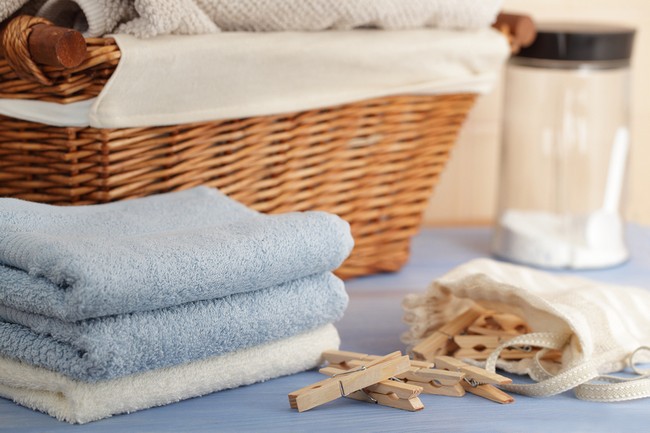- Make It Yourself Lavender Heart-Shaped Bath Bombs!
- 20 Things You Never Knew About “Down There”
- 12 Best Foods For Those Suffering From Arthritis Pain
- 12 Personal Hygiene Mistakes Almost Everyone Makes (Mom Never Told You About #4!)
- 15 Medicinal Plants And Herbs From The Cherokee People
- 12 Mind-Blowing Benefits Of Drinking Coconut Water During Pregnancy
- 12 Outstanding Winter Foods That Won’t Fatten You Up Like A Christmas Turkey
Top 8 Dangerously Toxic Cleaning Chemicals to Avoid

Photo credit: bigstock
8. Quaternary Ammonium Compounds, AKA Quats
This is another type of antibacterial/antimicrobial and has similar problems as triclosan. Besides breeding superbugs, this chemical is a skin irritant. A 10 year study showed that contact dermatitis was connected to quats. There is also evidence that even healthy people develop asthma after regular exposure to quats.
You find this in products labeled antibacterial or antimicrobial, liquid fabric softeners, dry sheets, and many household cleaners.
Read the label carefully! You don’t need expensive, potentially toxic fabric softeners to keep clothes free from static or to make them soft, vinegar, plain old white vinegar, does the same thing and no, your clothes will not smell like vinegar afterwards! Vinegar removes soap buildup, stops static cling, helps to keep clothes bright, and is completely nontoxic!
Extra Tip:
If you should see a cleaning product with a big label that says “green”, “biodegradable”, or “all natural”, that doesn’t mean it’s nontoxic. This terminology is called “green washing”, and an environmental consulting firm, TerraChoice, found that at least 95 percent of “green” products had at least one toxic chemical in their ingredients. For example, saying a product has “natural ingredients” means it can be made of mostly water. Also, CFC-free doesn’t mean much since it’s illegal to sell things with CFC. Also, pay attention to words like “completely biodegradable”, well, almost everything is biodegradable if given enough time. A plastic bottle is biodegradable in, oh, a thousand years, or so, right? Look for labels that say something like “Biodegrades within 14 days.”
































